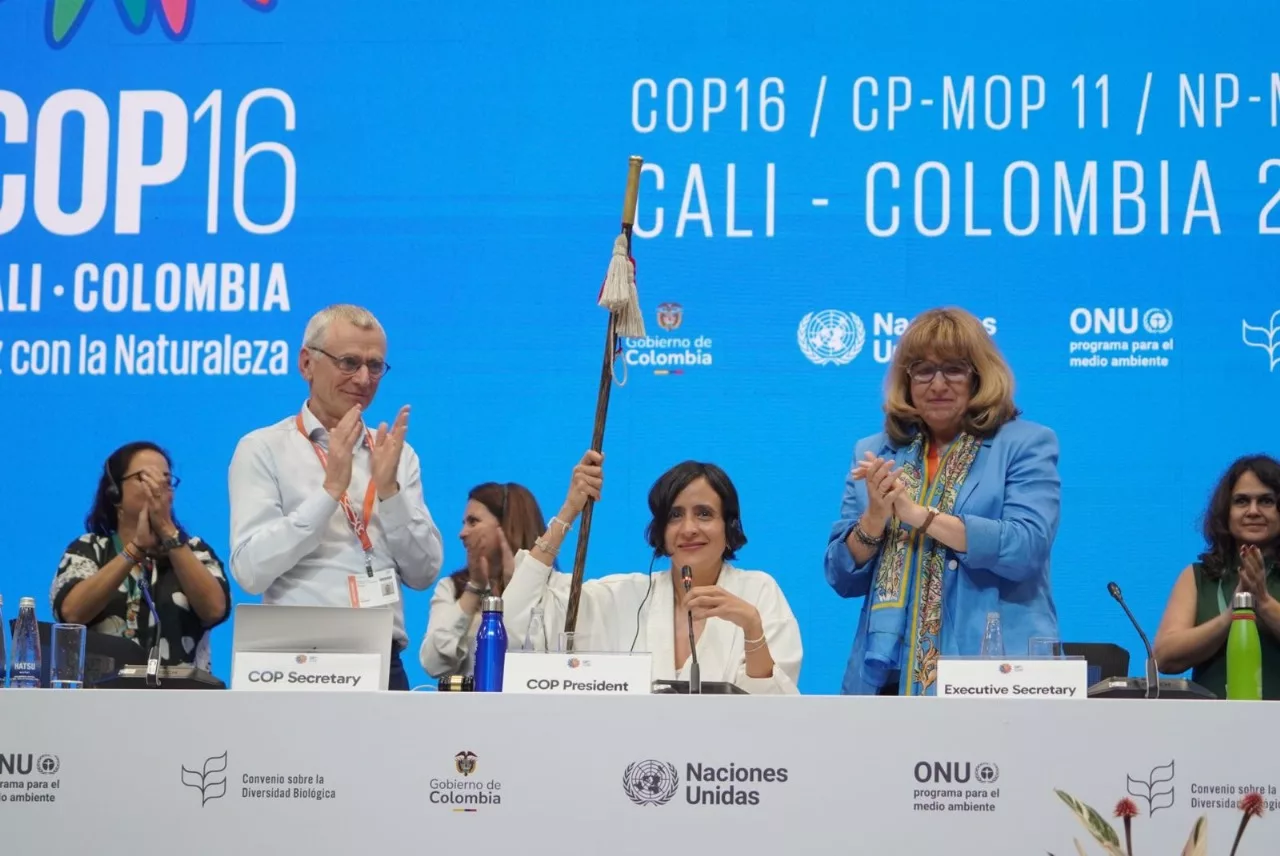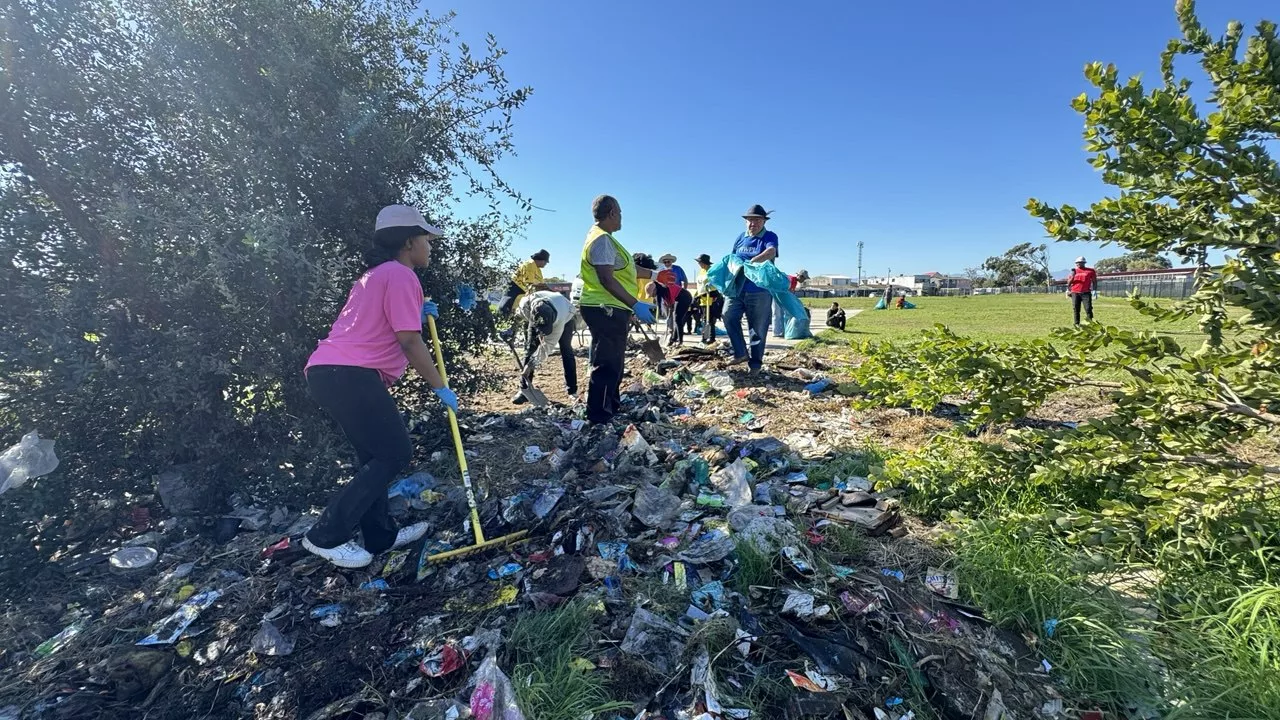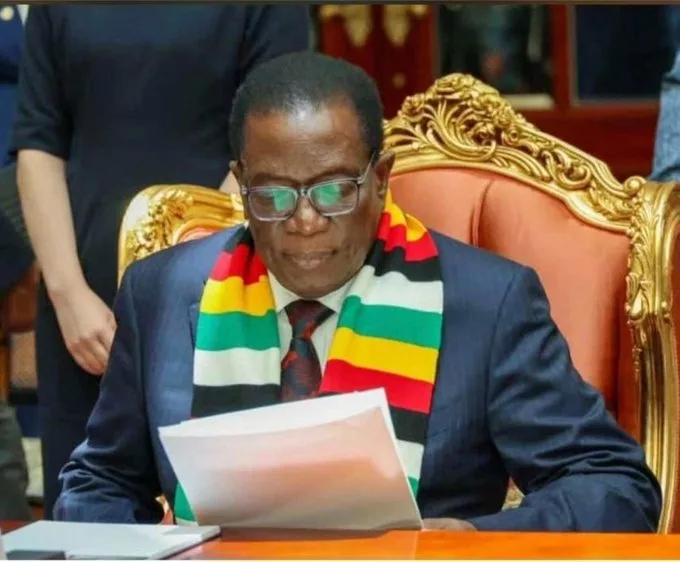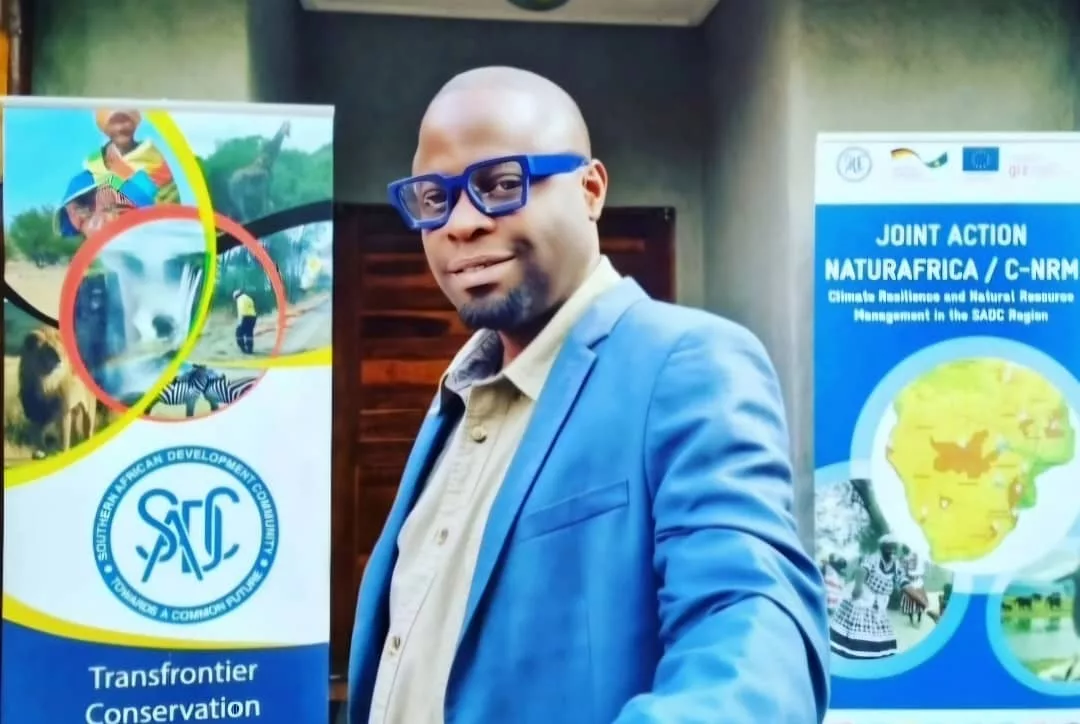|
Getting your Trinity Audio player ready...
|
Dr. Christian K. Tiambo, Centre for Tropical Livestock Genetics and Health (CTLGH) – International Livestock Research Institute (ILRI)
Progress at COP16
The “People’s COP”, COP16 summit concluded on the 2nd of November in Cali, in the Valle del Pacífico Event Center, the second largest and most modern event space in Colombia and the most modern in the Latin American Pacific region. The outcome included a new fund for digital sequencing information called the “Cali fund” and a new permanent body for Indigenous Peoples and local communities, allowing them to advise and offer their view at biodiversity COPs directly for the first time.
Despite all the energies invested by the negotiators, it is frustrating that a decision on Resource Mobilization was not adopted, but that should not shadow the fact that very important decisions were adopted toward the Goal of “Making Peace with Nature”:
- Acknowledging the vital role of digital sequence information on genetic resources, and open access to digital sequence information on genetic resources, in scientific research and sustainable development, open access was recognized as important to research and key to the operation of the databases (a key principle through the reference to decision 15/9).
- The multilateral mechanism shall be executed to be reciprocally loyal and adaptive to other international ABS instruments on DSI on genetic resources, to prevent the stacking of obligations and to streamline processes where appropriate. More importantly, the provisions of the mechanism shall not affect the rights and obligations of Parties deriving from any existing international agreement. Without prejudice to national ABS measures, where Parties put in place national measures on ABS from digital sequence information on genetic resources, they are invited to align them with the multilateral mechanism, such that there is no duplication of expectations to share the benefits arising from the use of DSI under the multilateral mechanism.
- Users of DSI in sectors that benefit in any way to their commercial activities should contribute a proportion of their profits (1%) or revenue (0.1) to the global fund, according to their size. Academia and public research will not be required to contribute monetary benefits. The decision on the ‘Cali Fund’ states that companies using DSI from genetic resources in their products should pay a portion of their profits or revenues into the fund.Funding to Parties shall be disbursed through direct allocations to countries. While the disbursement details are still being finalized, it has been agreed that 50% of the fund will be allocated to Indigenous Peoples and local communities, either directly or through governments.
- All users of DSI shall share non-monetary benefits fairly and equitably, as appropriate, to support self-identified capacity and technical development needs and priorities of developing countries, including among others, capacity building for the generation of, access to, and use and storage of DSI, as well as the self-identified needs of indigenous peoples and local communities.
- The need to do capacity building to support the use of DSI and the importance of supporting scientific research is recognized. Some of the Cali Funds may support capacity building and technology transfer. Unfortunately, the specific earmark for funding for capacity building was not retained.
- Establishment of the Subsidiary Body on the Full and Effective participation of IPLCs in the work undertaken under the Convention on Biological Diversity. This will ensure that IPLCs’ knowledge and governance systems remain integral to biodiversity policy and practice, and engage as well the IPLCs’ participation in the elaboration of the national biodiversity strategies and action plans (NBSAPs).
- For the first time in the CBD’s history, the role of people of African descent in implementing the Convention has been recognized. The “People’s COP” has seen increased participation of Indigenous Peoples, local communities, Afro-descendants, women, and youth, all fairly and equitably raising their concerns for “Making Peace with Nature.” Their voices were heard by all, both in the blue and green zones of COP16.
- Having agreed at COP 15 to establish a multilateral mechanism, including a global fund, to share the benefits from the use of DSI more fairly and equitably, delegates at COP 16 advanced its operationalization. This complex decision addressed how pharmaceutical, biotechnology, animal and plant breeding and other industries benefiting from DSI should share those benefits with developing countries and Indigenous Peoples and local communities.
- However, Cali Fund” still has many imperfections to be corrected. Funding should support the realization of the objectives of the CBD particularly in least-developed countries, small island developing states and economies in transition, specifically the conservation and sustainable use of biodiversity, including through the delivery of activities described in NBSAPs, contribute to scientific research on biodiversity, benefit Indigenous peoples and local communities, and support the building of capacity under Article 16 of the Convention, to generate, access, use, analyze and store digital sequence information on genetic resources according to capacity needs.
- Discussions around the establishment of a new wider biodiversity fund, as well as other key decisions have been postponed because there were no longer enough negotiators in the room to take decisions. This outcome, which not only denotes the lack of trust and confidence, may also translate an issue of inequity in in the negotiations and on the implementation of the Kunming-Montreal Global Biodiversity Framework (KMGBF).
- A Decision to promote synergies in biodiversity and climate policy instruments and initiatives on the ground was adopted. Considerable progress was made in integrating nature and climate efforts. However, with the Baku’s COP29 just at the doorstep of CBD COP16, worries could be fairly expressed about the capacity of Parties without NBSAPs to explore efficient associations between the climate and biodiversity conventions. Furthermore, with limited pledges in the biodiversity funds, what should be done differently to better track funding sources for climate finance that could simultaneously support the KMGBF targets?
- Among the most crucial areas of discussion was the protection of wild species. A decision on sustainable wildlife management underscored the necessity of monitoring, capacity-building, and the inclusive participation of indigenous peoples, local communities, and women. The framework encourages research on how wildlife use, biodiversity loss, and zoonotic diseases are interconnected, a vital area for a world increasingly aware of the public health implications of biodiversity loss.
Additionally, COP 16 saw a commitment to align plant conservation efforts with the KMGBF monitoring framework. This includes updating the Global Strategy for Plant Conservation with specific indicators and a standardized reporting template, ensuring that progress in plant protection is measurable and consistent with global biodiversity targets.
- At COP 16, CBD Parties approved a Global Action Plan on Biodiversity and Health designed to help curb the emergence of zoonotic diseases, prevent non-communicable diseases, and promote sustainable ecosystems. Recognizing that biodiversity loss and poor health often share common drivers, such as deforestation, pollution, and climate change. The plan emphasizes the urgency of tackling these threats to benefit both ecosystems and humans.
- A strong and regrettable absence of local and/or Indigenous, and non-conventional livestock which didn’t receive dedicated attention as crops and wildlife. This omission may prove detrimental to the implementation of the KMGBF, as in the global south Livestock play a crucial role in soil restoration and crop residue recycling, trees’ dissemination, income generation, building resilience, reducing GHG emissions and increasing carbon sequestration.
These results built on a spirit of compromise, and dialogue, demonstrate that multilateralism can still achieve results in a fractious time. Parties at COP 16 will resume discussions at a later date and venue to approve a new “Strategy for Resource Mobilization” to help secure $200 billion annually by 2030 to support biodiversity initiatives and redirect the $500 billion per year in subsidies that harm biodiversity. Parties will also look at the possible creation of a new dedicated global financing instrument for biodiversity to receive, disburse, mobilize, and articulate funding needs.
CTLGH and ILRI at the 16th United Nations Biodiversity Conference
At the 16th United Nations COP CBD, CTLGH, ILRI and partners, including AU-IBAR, WWF, GIZ, SNV, the State Department for Livestock, Ministry of Agriculture and Livestock Development, Kenya, and the CGIAR’s Impact Area Platform on Environmental Health and Biodiversity, focused on promoting a more balanced narrative around livestock and biodiversity. While livestock is often seen as contributing to biodiversity loss, ILRI showcased how sustainable livestock practices support conservation and restoration of the CBD, and advocated for the integration of sustainable livestock into National Biodiversity Strategies and Action Plans (NBSAPs) by identifying and engaging champions for livestock-biodiversity solutions.
CTLGH-ILRI and partners presented emerging insights on the relationship between livestock and biodiversity. Engaging with global partners, funders, and stakeholders, ILRI amplifies visibility and support for its strategic goals of integrating sustainable livestock into biodiversity conservation. The effort will continue with the establishment of a global alliance for local and Indigenous livestock conservation, management, and restoration.
What went sour at the COP16
However, the negotiations were suspended as the required quorum could no longer be reached, as only 44 out of 196 parties (22%) remained in the room, while numerous issues were still pending – comprising finance and the monitoring framework – and will resume at a later date.
Though the COP16 was by far the most attended and the most inclusive, early warning signs of the difficult situation laid in the fact that at the unset of the Summit, 85% of parties (170 out of 196 parties) were set to miss the deadline to release new NBSAPs, and 12 out of the 17 “megadiverse countries” (provide a home to 70% of the world’s biodiversity) where not among those who submitted their new Biodiversity strategy and action plans. The major reason for most countries was the lack of timely funding available from the Global Environment Facility (GEF) fund.
NBSAPs are landmarks for how each country plans to tackle biodiversity loss within its territory, as well as ensure they meet the international targets outlined in the GBF. Countries are not legally obliged to submit it, but without NBSAPs, it was almost inevitable for the negotiations to very tough and blurred, leading to a sink.
The issue of non-monetary benefits was the most neglected of the COP and as a result, the two paragraphs on NMBs are unclear. There will be a lot to do in the next two years (still trying to compile in the table below).
The new COP presidency and the CBD Secretariat should urge countries to finalize and submit their new NBSAPs, without which there is no Target 3 (Effective conservation and management of 30% of land and 30% of oceans by 2030) of the GBF.
Engagement on or before COP17 Yerevan, Armenia, 2026
A quarter of livestock breeds – from chickens, ducks and geese to horses, camels and cattle – are classified at risk of extinction. Even more concerning is the fact that a lack of data means the status of more than 50 percent of breeds remains unknown. More than 200 livestock breeds have gone extinct since 2000, some without having ever been recorded.
Just 40 out of thousands of species of mammals and birds have been domesticated for food and agriculture yet these domesticated food-producing animals contribute an average of 40 percent of the world’s agricultural gross domestic product. Eight of these species provide more than 95 percent of the human food supply from livestock.
The erosion of local and locally adapted livestock diversity poses an especially serious threat to developing countries, where livestock-keeping generates as much as 80 percent of agricultural GDP, providing much-needed food, fibre, fuel, and draught power.
A shrinking pool of commercially improved livestock provides increasingly limited potential for animals to support food security, economic growth, climate adaptation, and even ecosystem services that protect biodiversity more broadly. Maintaining agricultural biodiversity is essential for diverse, healthy diets and resilient, diversified forms of rural livelihoods. It is therefore vital that negotiators at COP16 include livestock as well as wildlife in their National Biodiversity Strategies and Adaptation Plans (NBSAPs), including agreements to compensate countries for indigenous livestock DNA sequences.
October 2025 is the date of the next Subsidiary Body on Scientific, Technical, and Technological Advice (SBSTTA) meeting. It is therefore vital that negotiators from COP16, COP29, and others include livestock as well as wildlife in their National Biodiversity Strategies and Adaptation Plans (NBSAPs), including local and Indigenous livestock digital sequences.
Therefore, we recommend parties relentlessly work on the following items in preparation for the next exchanges leading to COP17:
- African Continental Gene Banks & Databases (GBDB)
- List of sectors to which such users may belong (enclosure A)
- Conservation, Management, and Restoration of Local and Indigenous Livestock Decision
- Finalize and submit inclusive NBSAPs
- The modalities of the multilateral mechanism for the fair and equitable sharing of benefits from the use of DSI
- Subsidiary Body on Implementation
- Contribution thresholds, rates, and review periodicity
- Long-term strategic framework for capacity-building and development
- Mechanism to strengthen technical and scientific cooperation
- Mechanism to strengthen technical and scientific cooperation
- The issue on the indication of DSI not subjected to any restrictions which prohibit its sharing
- Formula issue by a group established with the terms of reference provided in enclosure C
- Parties to autonomously define their capacity-building priorities from the funds
- Representativity in the steering committee established with the terms of reference and composition in enclosure D
- Scope of the non-monetary benefits facilitated by the multilateral mechanism and its alignment with the self-identified needs of beneficiaries
- Effectiveness of the multilateral mechanism in providing legal certainty.
The way forward: The Global Livestock-NBSAPs Support Initiative
ILRI and partners are proposing the Livestock-NBSAPs Support Initiative, to support Parties in the global south in their National Biodiversity Strategies and Action Plans (NBSAPs). The initiative will be dedicated to advancing the integration of local and indigenous livestock biodiversity into NBSAPs and food systems, through conservation, management, and restoration actions. By aligning national strategies with the Kunming-Montreal Global Biodiversity Framework, the initiative will promote local and indigenous livestock heritage biodiversity conservation while ensuring sustainable food security and nutrition. It will serve as a key platform to support countries in achieving global biodiversity targets through biodiversity-friendly livestock practices.
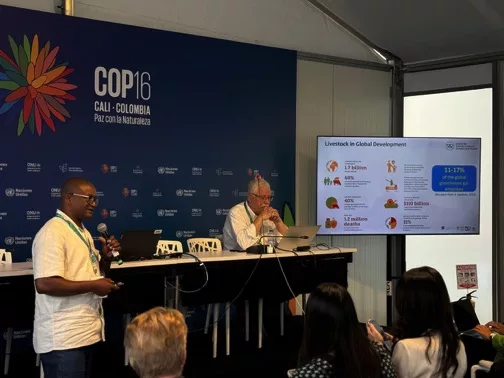
Other readings:
COP16 documents : https://www.cbd.int/conferences/2024/cop-16/documents


